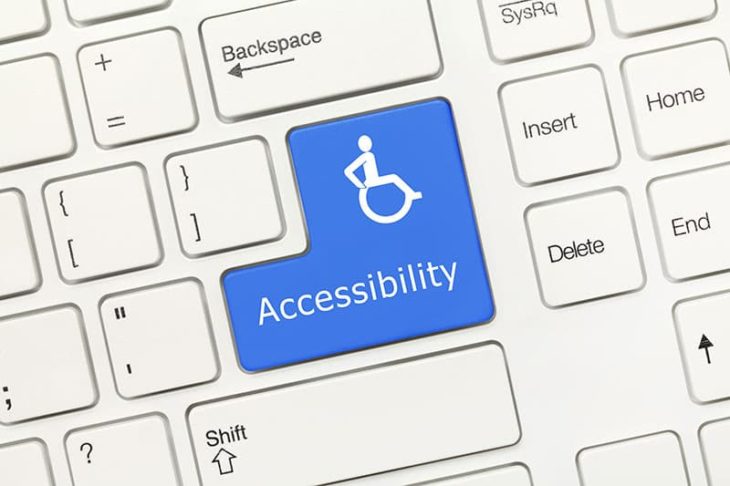In the realm of web design, user experience, or UX, is incredibly important. It’s what makes things more accessible for your visitors. When it comes to making your website more user-friendly and appealing, we use basic web design concepts that create the ideal user experience. Discover how web accessibility works to help users navigate your site more smoothly.
What Is Web Accessibility?
The way we digest and consume information is essentially human nature. That’s why web accessibility is important. In our world, accessibility often means building a ramp for those who can’t walk up stairs. Or putting braille on the door next to the bathroom, or even something as simple as putting up signs that very clearly communicate where things are located. But what is accessibility in web design?
Technology, as versatile and convenient as it is, can also detract from user experience because of certain barriers. Quite literally, web accessibility has to do with people having access—everyone having access. Making your website more accessible means designing clear calls to action and making it navigable for every user.
Tips for making your website more accessible
With the knowledge that you have viewers who may not be able to access your regular content, you can now make efforts to give accessibility to everyone.
When providing that access, consider the following aspects:
- Visual: Make your website more visually appealing and easy to use for those who are visually impaired.
- Auditory: Consider the special auditory content you have on the site and find a way to support those who are deaf or have a hearing condition.
- Cognitive: Any intellectual or developmental differences among users are all good reasons to consider revamping your web accessibility.
- Seizures: Certain visuals can cause photo epileptic seizures; be cautious with features like the strobe-effect or flashing lights.
- Mobile: Some people have difficulties moving their hands, which can make web access quite difficult.
Luckily, you can close these web accessibility divides. By using web design strategies, everyone can have access. Here are some simple steps to achieve that:
- Improve your site speed: Your user should not be waiting longer than 8 seconds for your page to load.
- Consider mobile users: Some websites have a hard time loading on cell phones or tablets. Design your web page to function properly on any mobile device.
- Use contrast to help color blindness: Many users suffer from color blindness—about 5% of the entire population, in fact. It’s important to be as “black and white” as possible; make sure the text on the screen isn’t too similar to the background.
- Transcribe any and all audio: Deaf users won’t be able to consume audio information without assistance. Include written text of everything said in the file or video.
- Include graphics wherever you feel it’s appropriate: Dyslexic or autistic people will have difficulty with certain text, so make sure to include graphics or pictures to aid the understanding of your website’s content.
Consult the Experts in User Experience
MVestor Media works to create websites that has web accessibility for all visitors. Because we’re experienced and trained in web design, working with us means you won’t have to worry. Give us a call or visit us at our office so we can get started on your website today.

